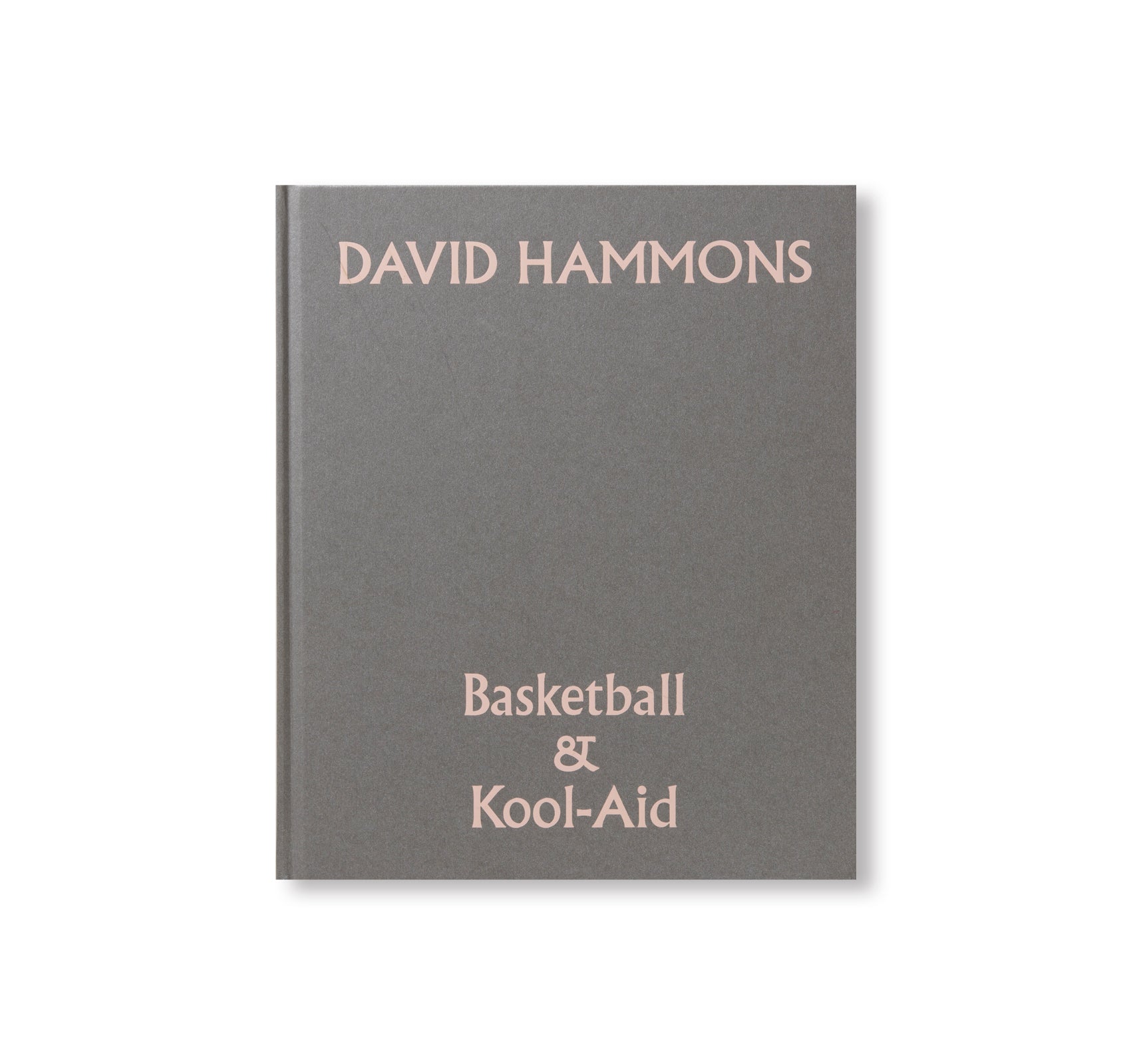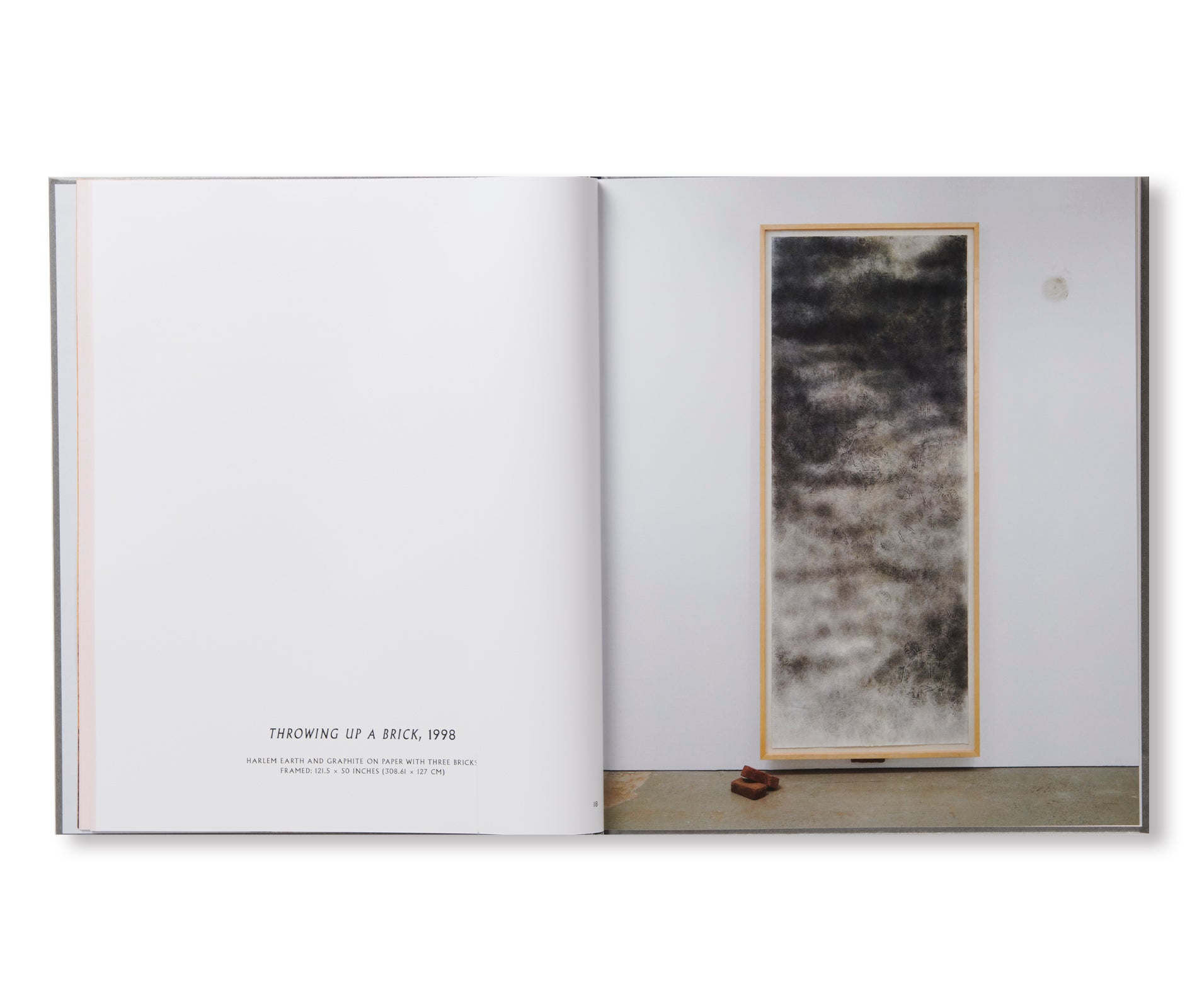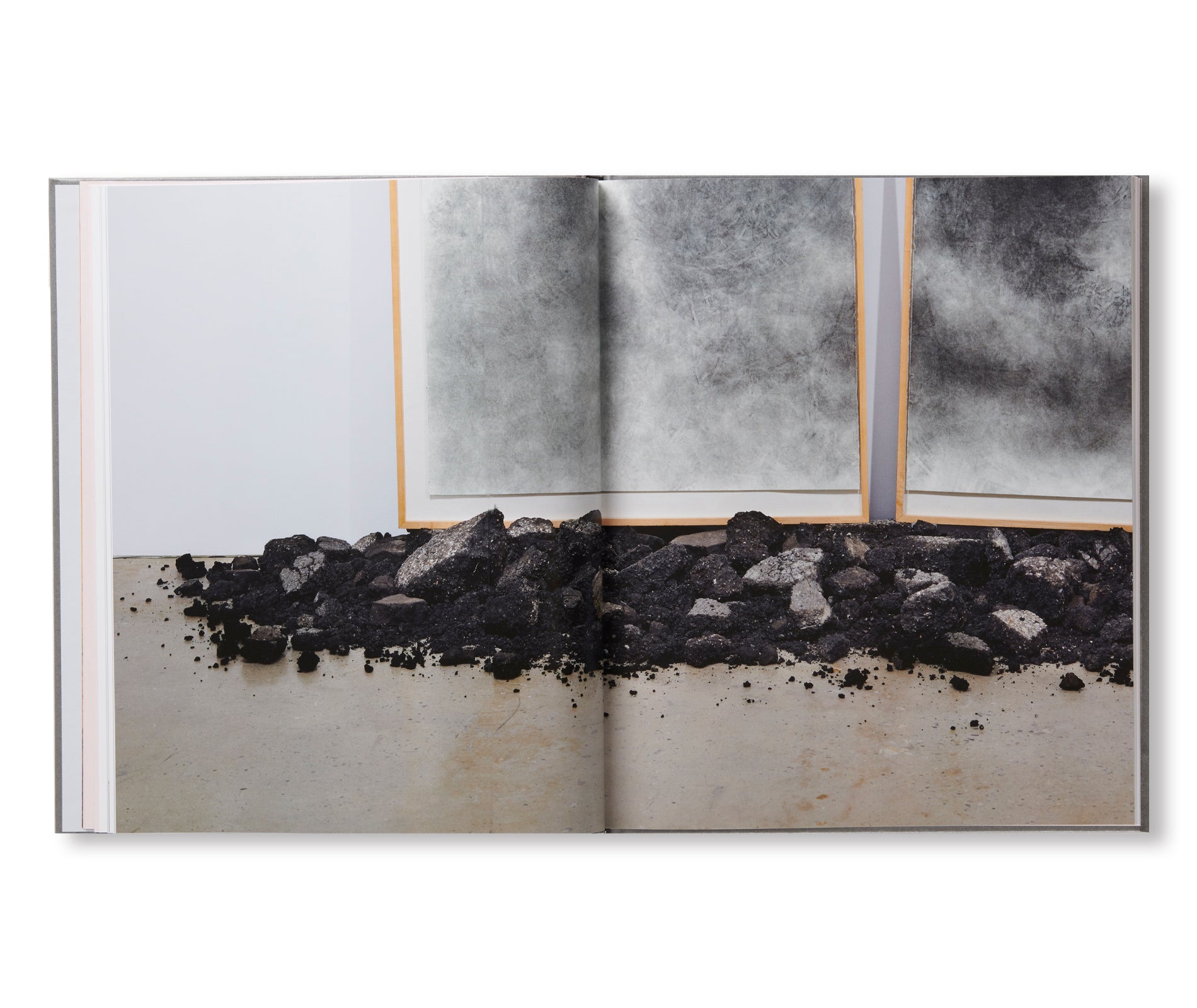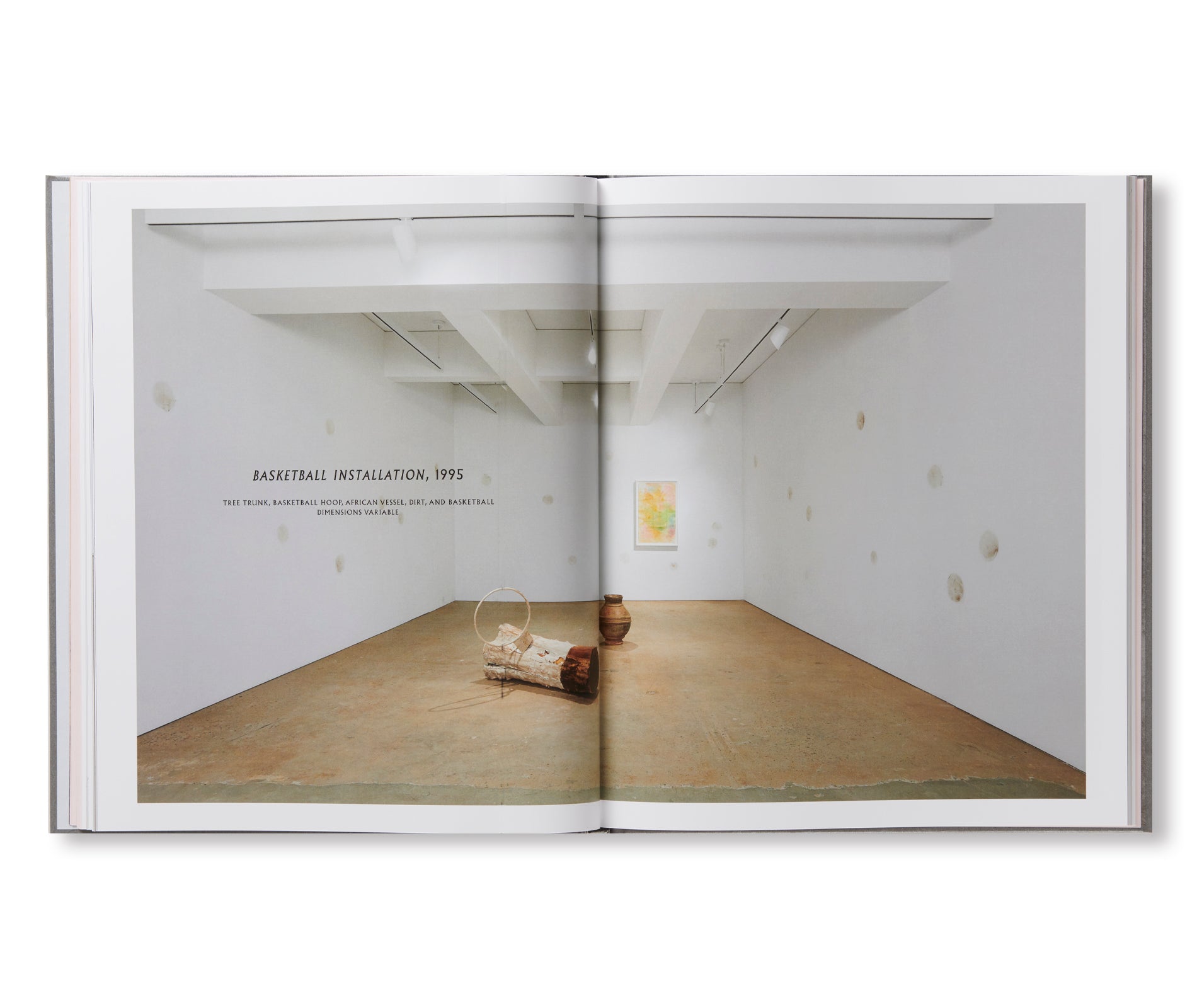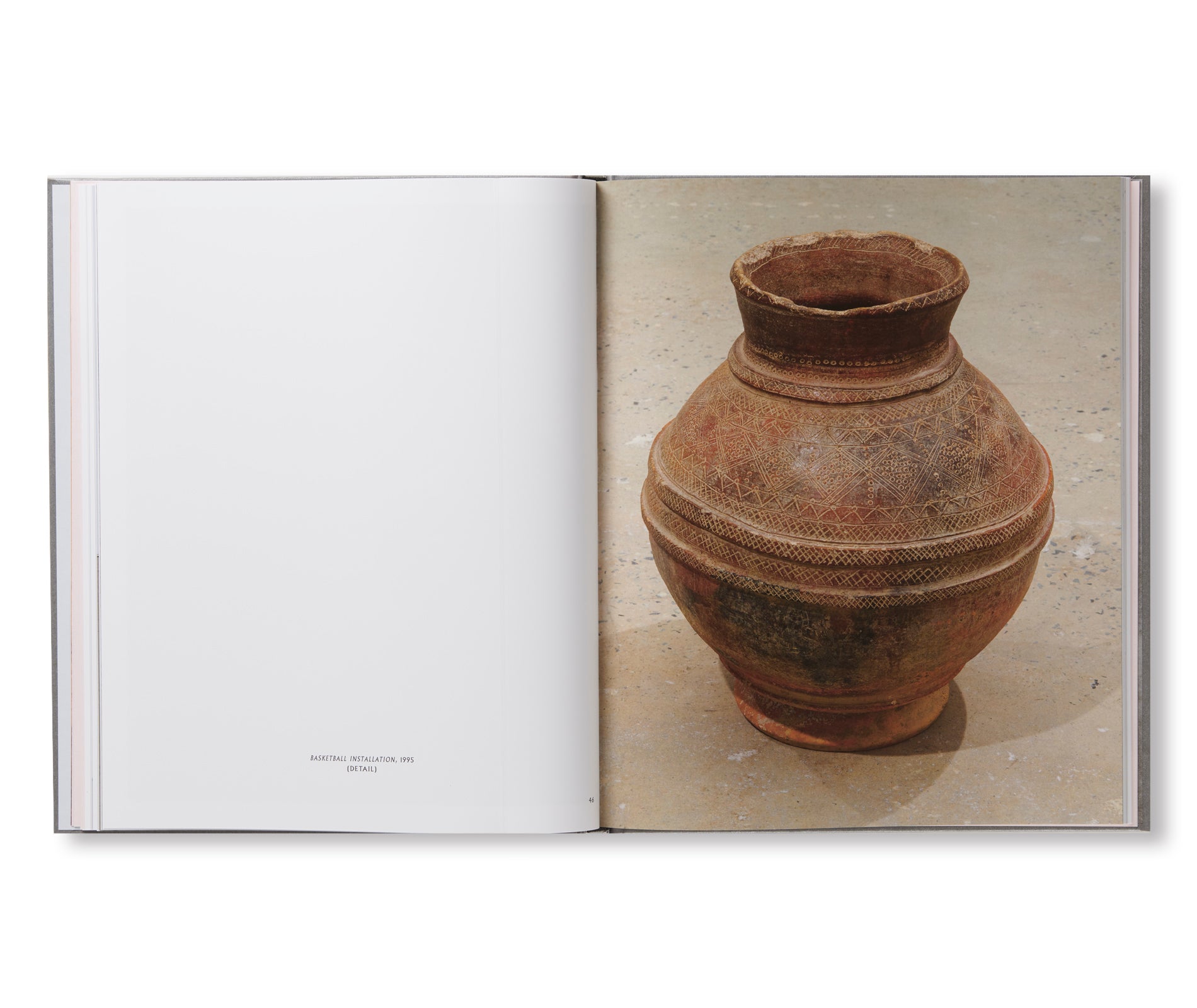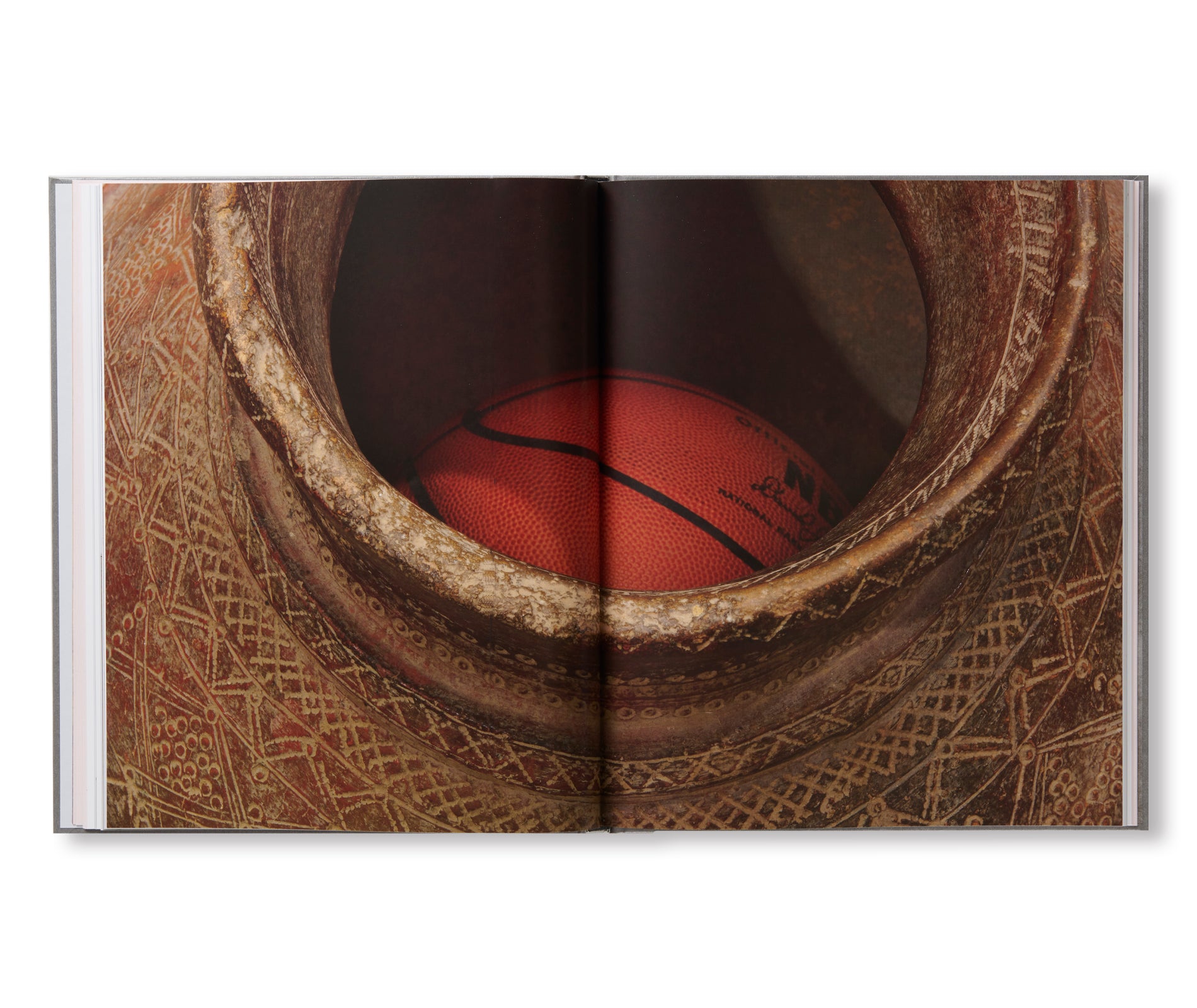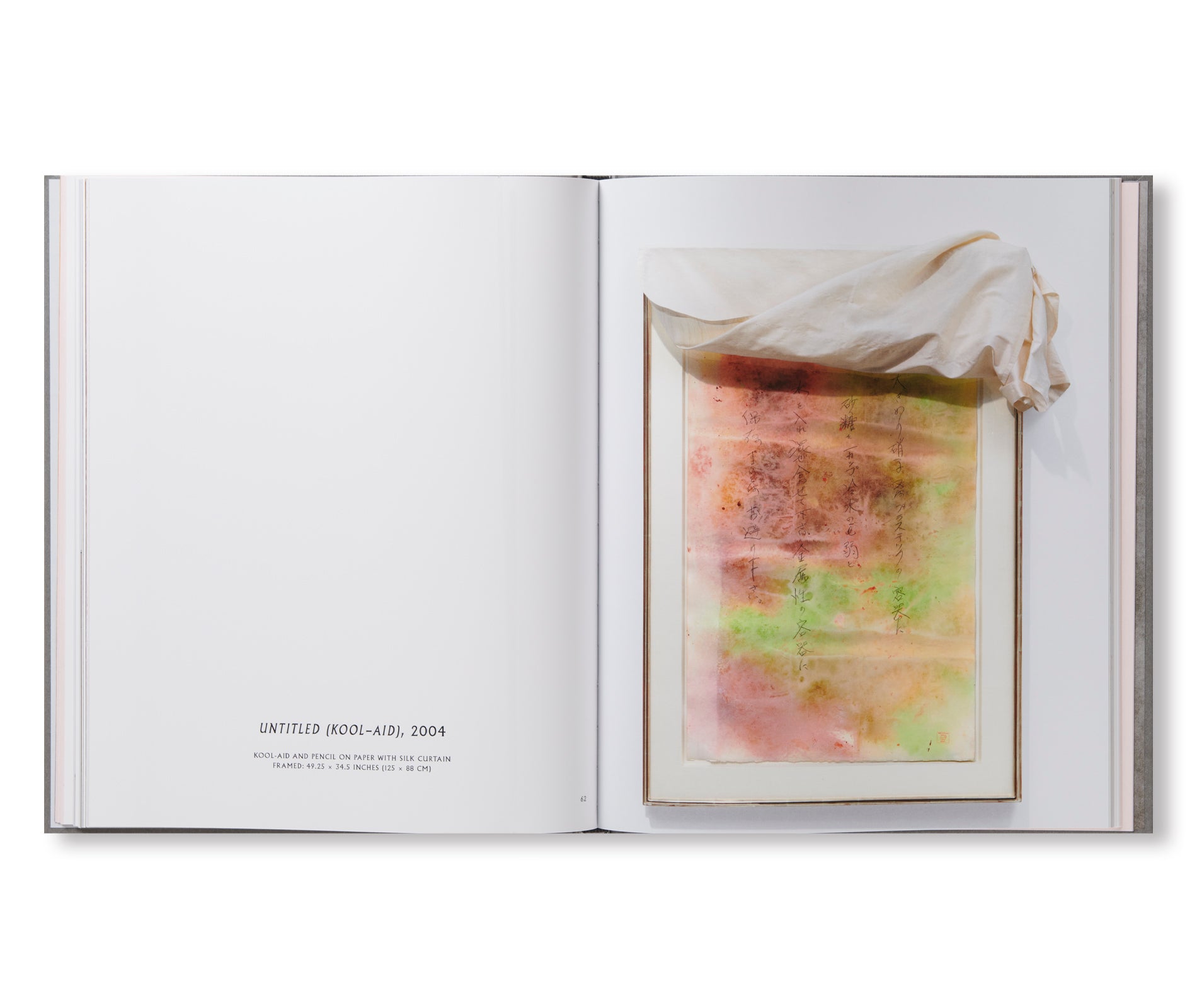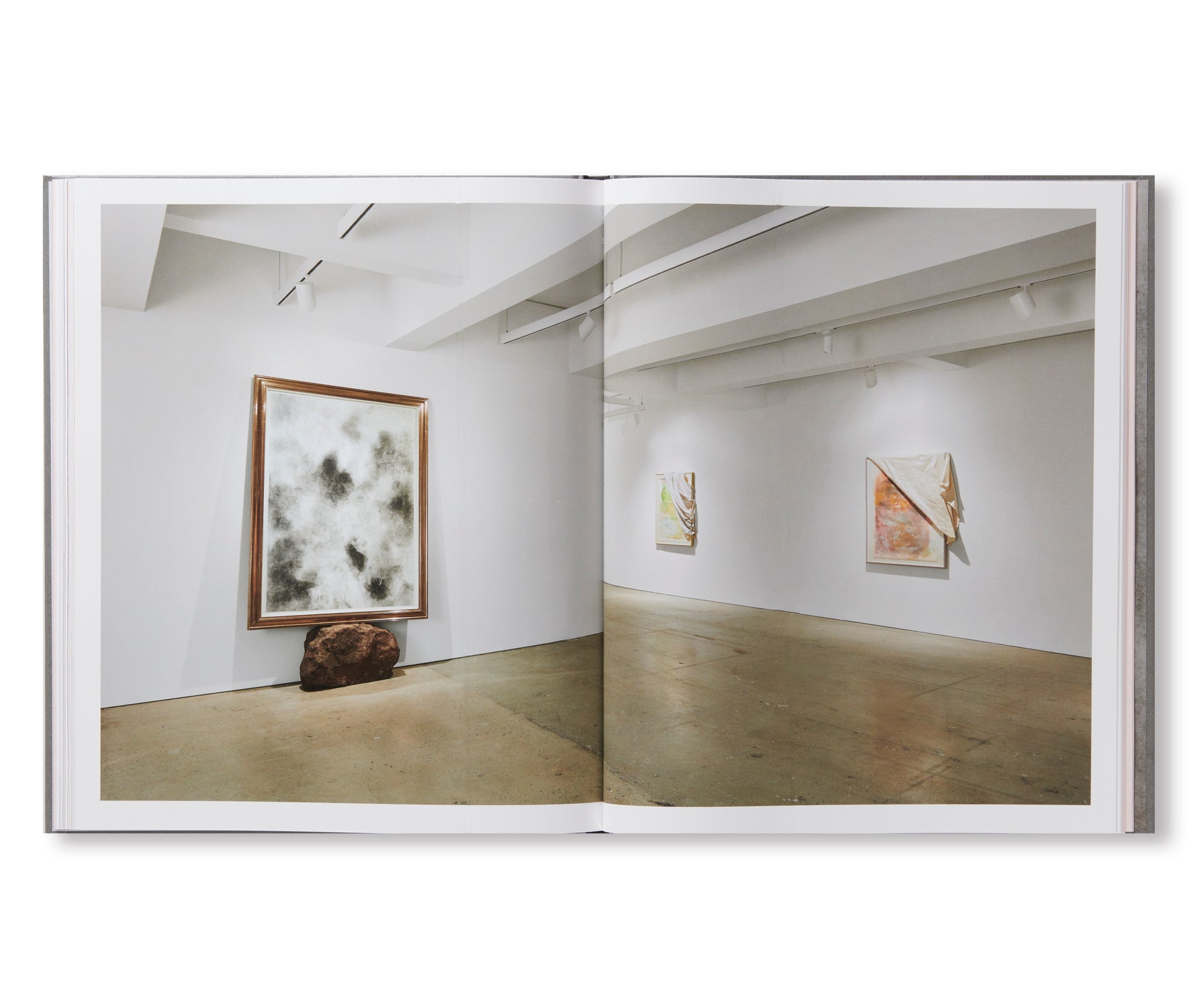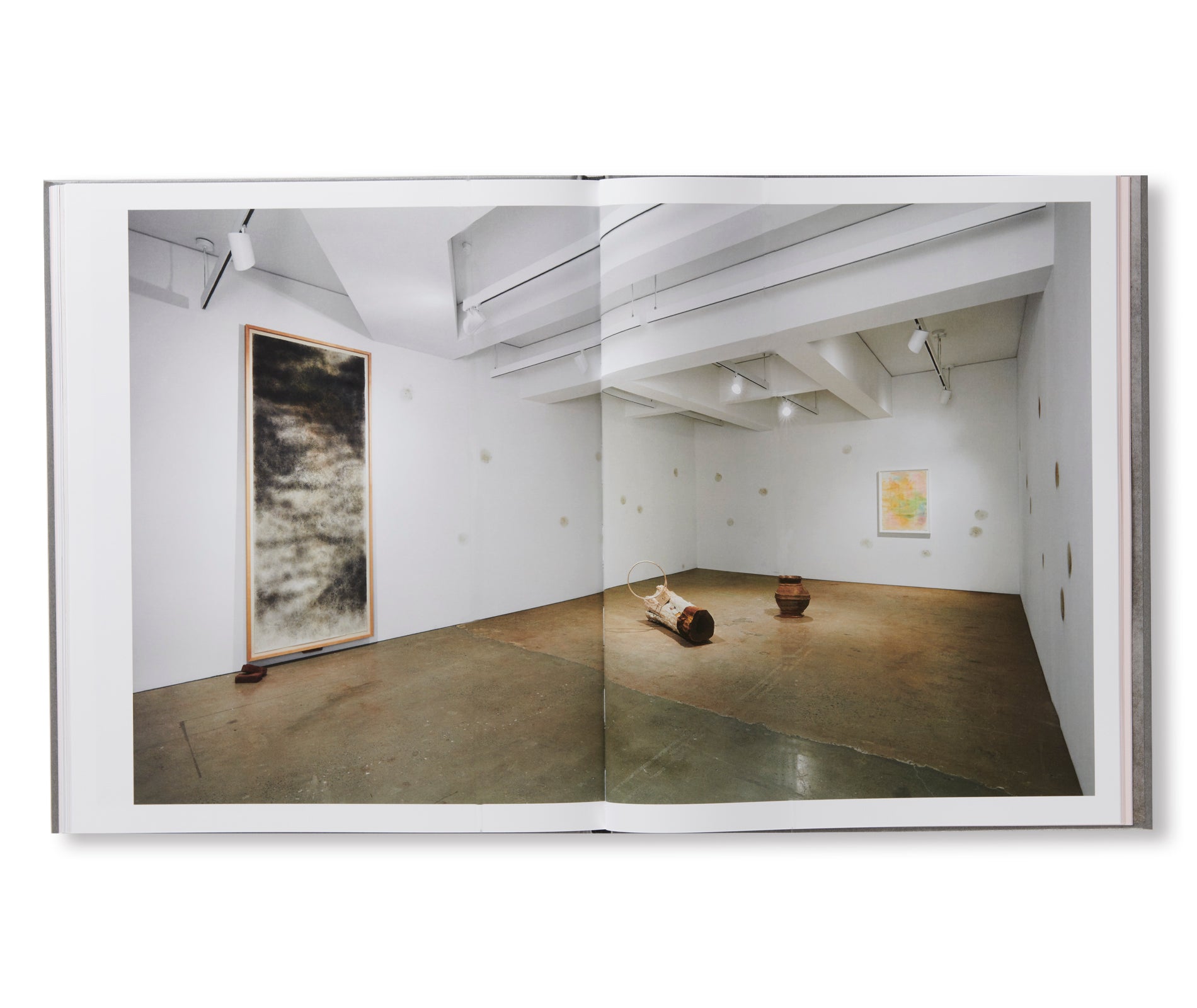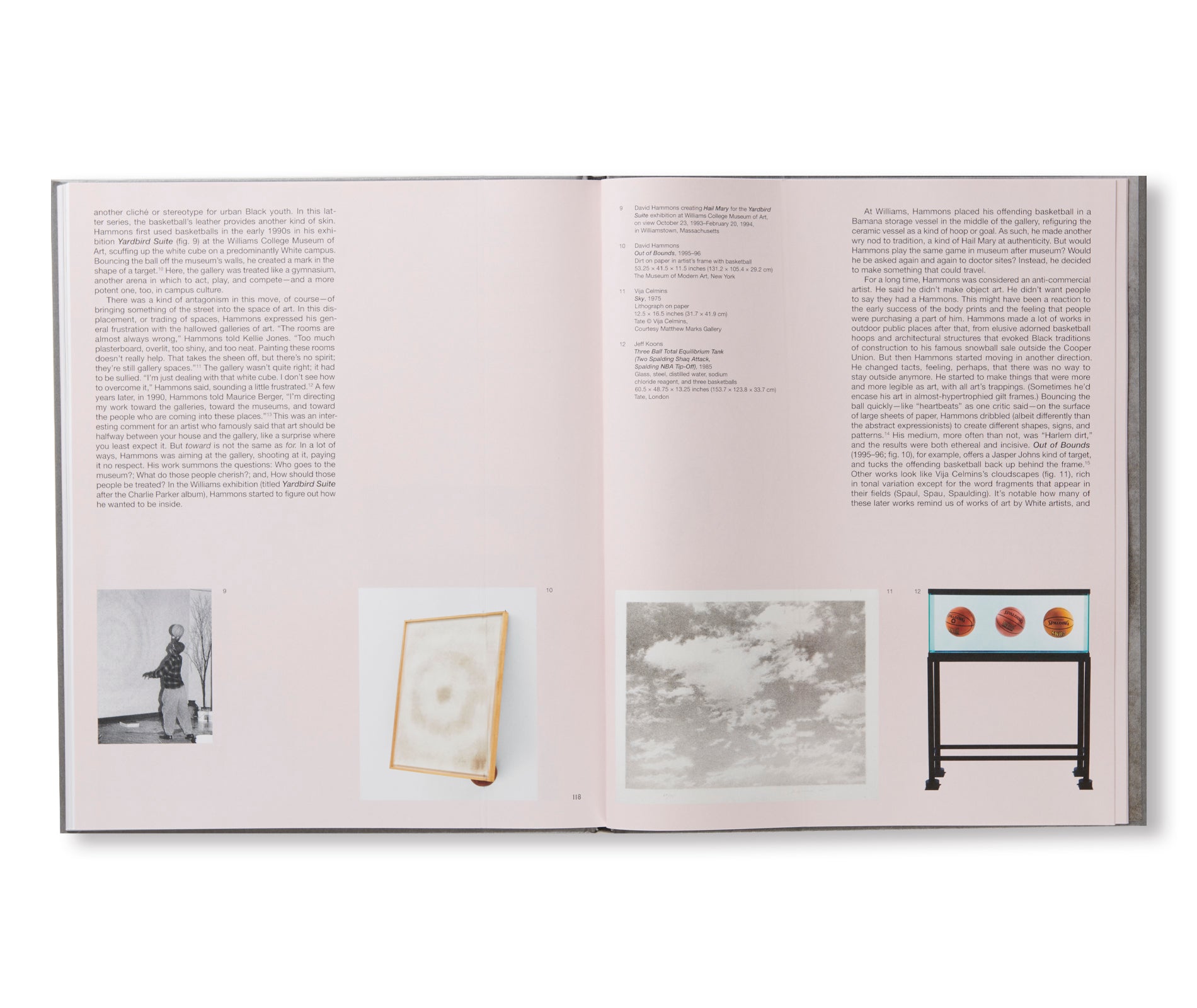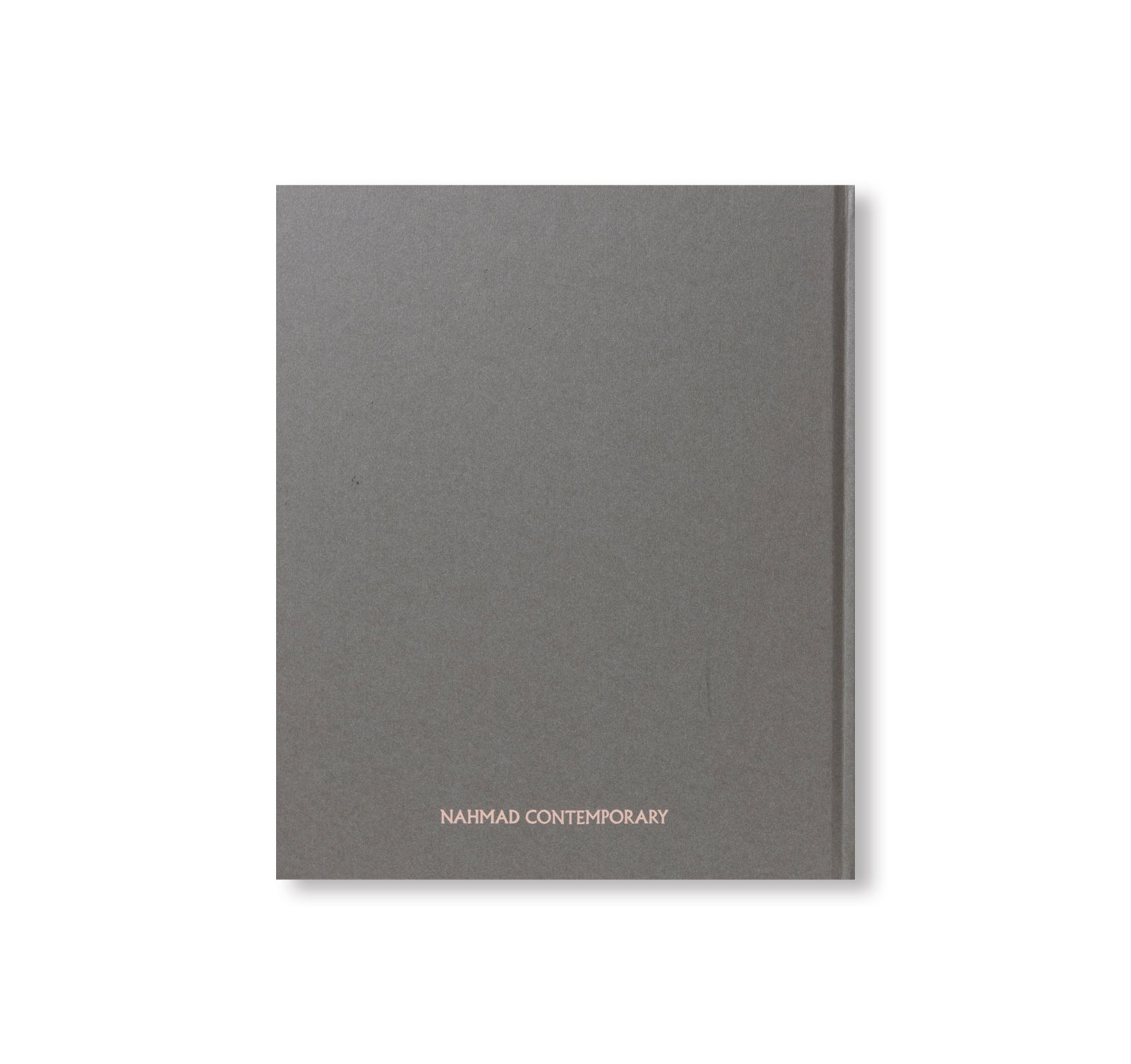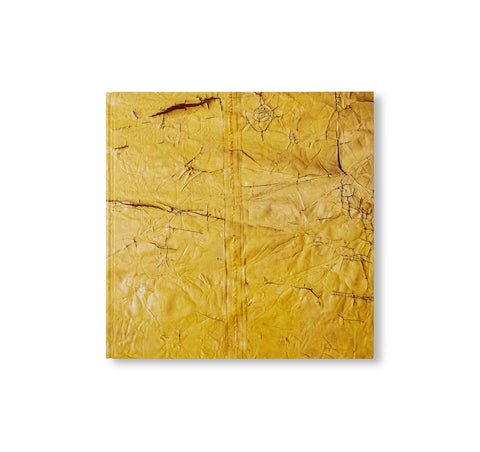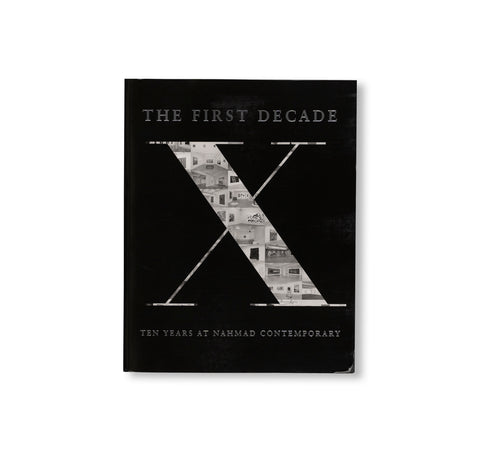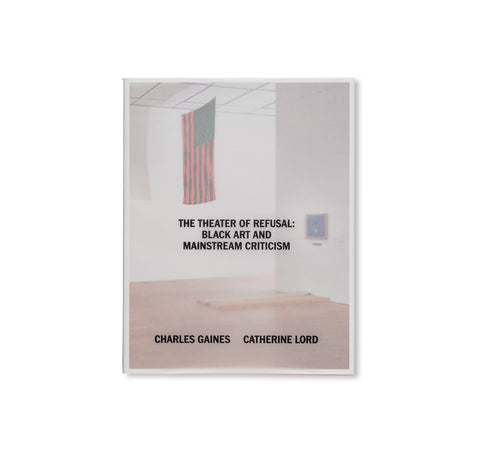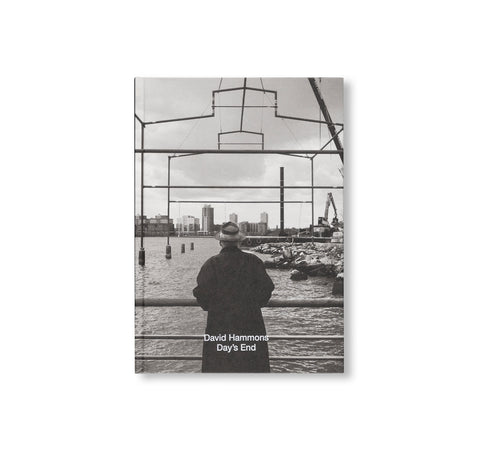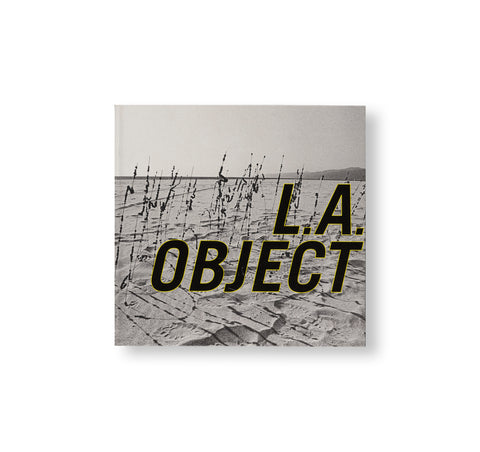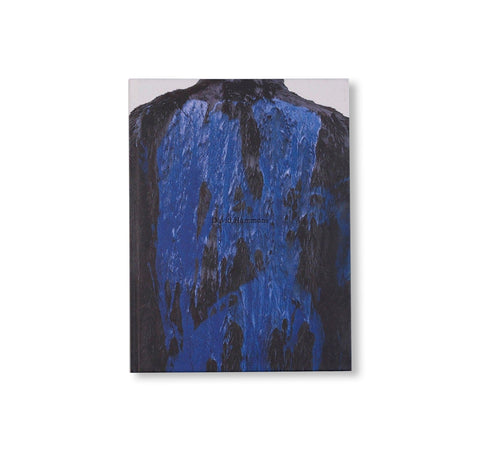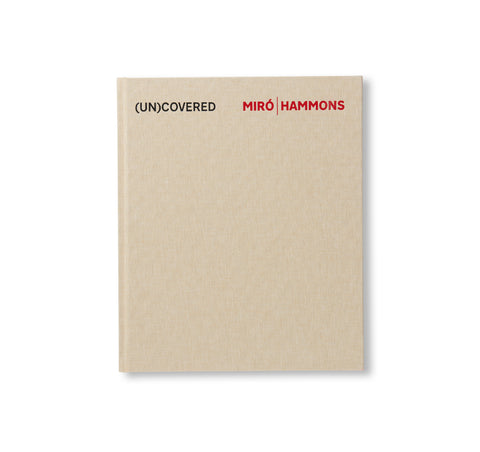BASKETBALL & KOOL-AID by David Hammons
アメリカ人アーティスト、デイヴィッド・ハモンズ(David Hammons)の作品集。2021年にニューヨークのギャラリー「Nahmad Contemporary」で開催された展覧会に伴い刊行された。1995年から2012年にかけて制作された2つのシリーズ「バスケットボール(BASKETBALL)」(1995-2012年)と「クールエイド(KOOL-AID)」(2003-2007年)に初めてスポットを当てている。
50年以上にわたり制作された多面的な作品群から一貫して見られるのは、アメリカにおける人種的なステレオタイプや偏見、そしてアイデンティティへの追及である。本2作品においては、人種の構造や、アフリカ系アメリカ人の経験や文化に結びついた固定概念について掘り下げた内容となっている。
「バスケットボール」では、バスケットボールの地として知られる「ハーレム」の塵にまみれたバスケットボールを白い紙にバウンドさせる手法が用いられている。その痕跡は、バスケットボールが社会から疎外されたコミュニティへ約束した、社会的かつ金銭的な優越性の比喩でもある。さらにそのボールが描く予測し難い軌跡は、NBAでの名声を得るべく努力を続けるアスリートたちの不安定さやチャンスを狙わなければならないその道筋を思い起こさせる。
「クールエイド」では、アメリカで人気の「クールエイド(Kool-Aid)」というカラフルな粉末ドリンクを用い、爆発的なイメージを紙上で描き、そこに日本語で作り方を記載している。視覚的に色鮮やかに仕上げられた本作は「カラー・フィールド・ペインティング」を想起させるが、それ以上にその突飛な材料は、エド・ルシェー(Ed Ruscha)の「Stain」シリーズや、アンディ・ウォーホル(Andy Warhol)の「酸化絵画(The Oxidation Paintings)」シリーズを思い起こさせる。また、砂糖が多く使われた安価なそのドリンクと、アフリカ系アメリカ人の文化との関連性や、アメリカのカルト教団「人民寺院(Peoples Temple)」のメンバーのうちアフリカ系アメリカ人を多く含む900人以上が亡くなった「ジョーンズタウン大虐殺(Jonestown Massacre)」に由来する「クール=エイドを飲む(drinking the Kool-Aid)」という慣用句にも関連しており、紛れもなく政治的な事象を孕んだ作品であると言える。また、今作では「クールエイド」の粉の着色料を保護するため絹布で作品の表面を覆っており、「バスケットボール」と同様に彫刻的な要素も含んでいる。そこからは「アッサンブラージュ」や「ファウンド・オブジェクト」との親和性が見え、壁や覆うことに対する作者の特別な思い入れを感じさせる。
作者は、1959年から1979年にかけてイタリアで展開した芸術運動「アルテ・ポーヴェラ(Arte Povera / 貧しい芸術)」に対する素材への関心と、マルセル・デュシャン(Marcel Duchamp)のコンセプトに対する考察を経て、素材・イメージ・物質・言語に固有の文化的かつ社会的背景を探るべく、日常生活でみられる儚い物質を流用(アプロプリエーション)している。今作において、前衛的な手法と型破りな素材を用いた抽象的な構成を取り入れ、鋭敏な型や素材やコンセプトに対する自身の探究を説得力ある作品へと昇華させていることが本書より見て取れる。
Published on the occasion of the exhibition David Hammons: Basketball & Kool-Aid May 1 - July 24, 2021
NEW YORK—Nahmad Contemporary is pleased to announce David Hammons: Basketball and Kool-Aid, an exhibition dedicated to two radical series of works that the seminal American artist created between 1995 and 2012. On view from May 1 and extended until July 24, 2021, this is the first in-depth presentation of either body of work, for which Hammons employed vanguard artistic methods and unconventional materials to create abstract compositions, parlaying his keen formal, material, and conceptual understandings into deeply compelling works of art.
Invoking the material concerns of Arte Povera and the conceptual investigations of Marcel Duchamp, David Hammons appropriates the ephemera of daily life to explore the cultural and societal subtexts inherent to materials, images, objects, and language. A consistent thread throughout his multifaceted oeuvre, which spans over 50 years, is an investigation of racial stereotypes, prejudices, and identities in the United States. As such, the Basketball (1995–2012) and Kool-Aid (2003–07) works explore constructions of race and the clichéd associations bound to black American experience and culture.
The delicate, grey-scale abstractions in Hammons’ Basketball drawings (1995–2012) belie their unorthodox means of creation, in which the artist bounced basketballs—often covered in “Harlem dirt”—onto sheets of white paper. The transformative mark-making is an allegory for the societal and monetary transcendence that the sport promises marginalized communities. Furthermore, the unpredictable trajectory of the dribbled ball on the surface summons the volatile and often chance-based path of many athletes who endeavor to reach NBA fame. Hammons first called attention to the sport’s encumbered symbol of opportunity for disenfranchised African American youths in the 1980s with public sculptural works such as Human Pegs/Pole Dreams (1982) and Higher Goals (1986) that feature unattainably tall basketball hoops.
In many of the works from his Basketball series, Hammons also incorporated found objects—ranging from a suitcase or alarm clock to a mound of asphalt or bricks—with symbolically loaded associations to the sport. The suitcase, for instance, can be interpreted as the luxury of travel afforded to professional athletes or as a pun on the game’s terminology of “traveling with the ball,” and the asphalt may reference the urban surface on which the sport originated. By transforming the works from two-dimensional framed drawings to sculptural entities, Hammons calls attention to the agency of art to do more than sit idly as a passive object of consumption.
To make his Kool-Aid works (2003–07), Hammons applied the popular powdered drink to paper in vibrant, explosive swaths of color, embellishing some with Japanese script that spells out the process for mixing Kool-Aid. While the visually appealing and sumptuous compositions evoke abstract expressionism and color field painting, they destabilize this tradition through their unconventional materials, which recall Ed Ruscha’s stain series and Andy Warhol’s oxidation paintings. Further, the Kool-Aid drawings are unmistakably rife with political commentary: the association of the inexpensive sugary drink with African American culture, and the phrase “drinking the Kool-Aid,” which stems from the “Jonestown Massacre” in which over 900 members of the Peoples Temple movement (many of them African American) died.
As in the Basketball drawings, these works include sculptural elements: silk veils that cover the surfaces of the works (to protect the fugitive Kool-Aid pigment from sunlight), and frames wrapped in colored terry cloth. These elements reflect Hammons’ affinity for the art of assemblage and found objects, and his particular interest in drapery and concealment, which can be traced from his earliest body prints of the 1960s to his recent tarp paintings (which he produced immediately following the silk-shrouded Kool Aid works.) His choice to incorporate fabric that obscures the composition speaks to his larger critique of the commodification and objectification of art.
Through unconventional artistic methods and media, both series evoke powerful political associations while demonstrating the artist’s ingenuity. The brilliance of these “sculptural” drawings, offering cultural symbolism and contemplative connotations, resides in their subtlety and elusiveness that ultimately provokes curious and reflective inquiry about the practices and beliefs shaping our identities.
